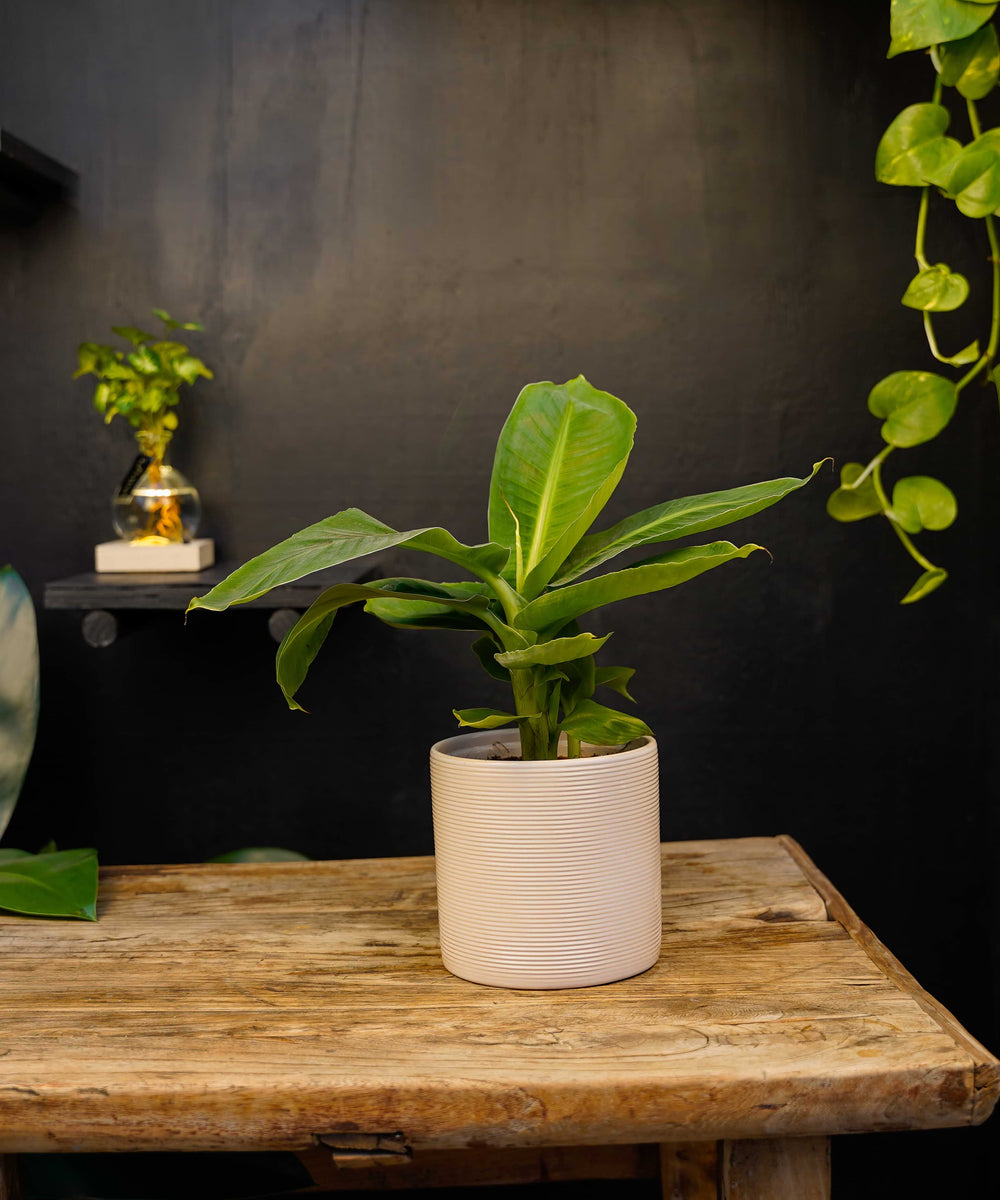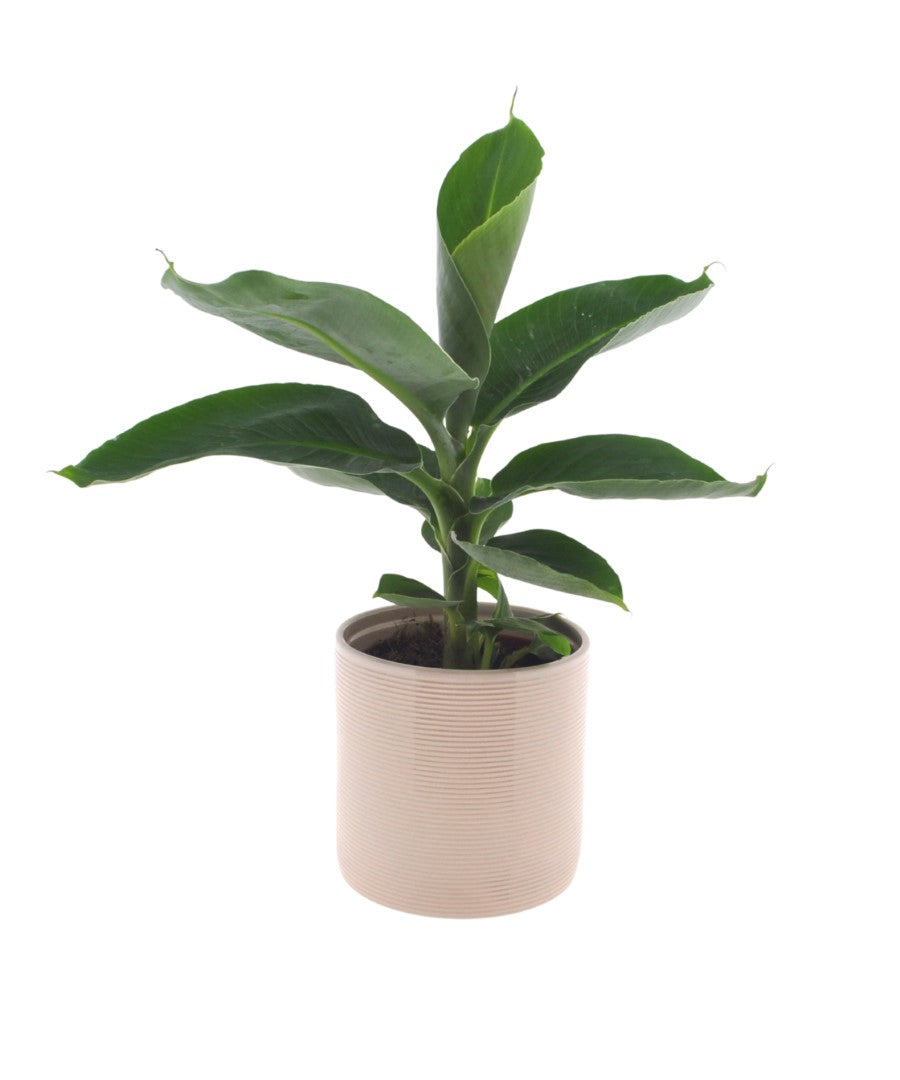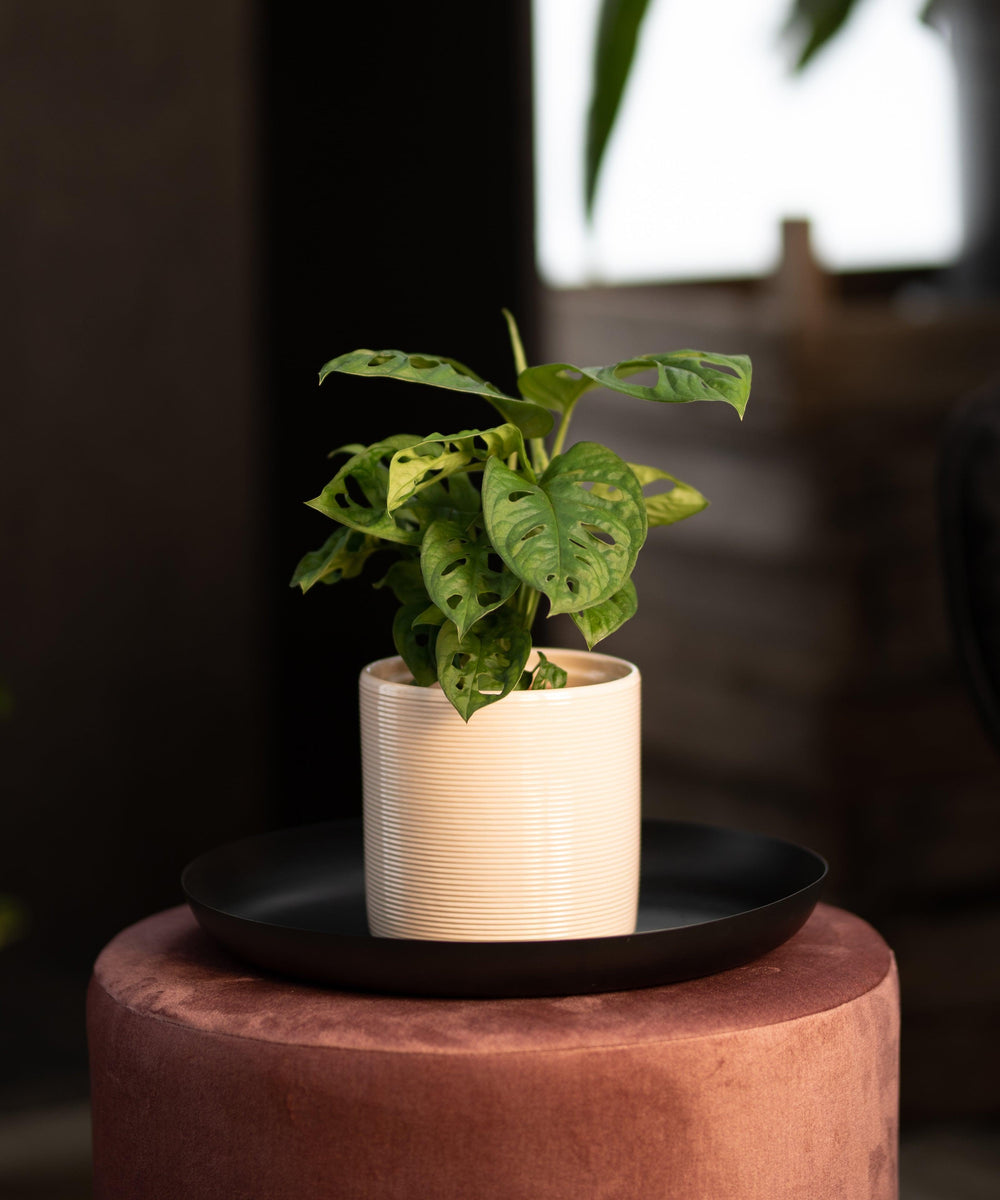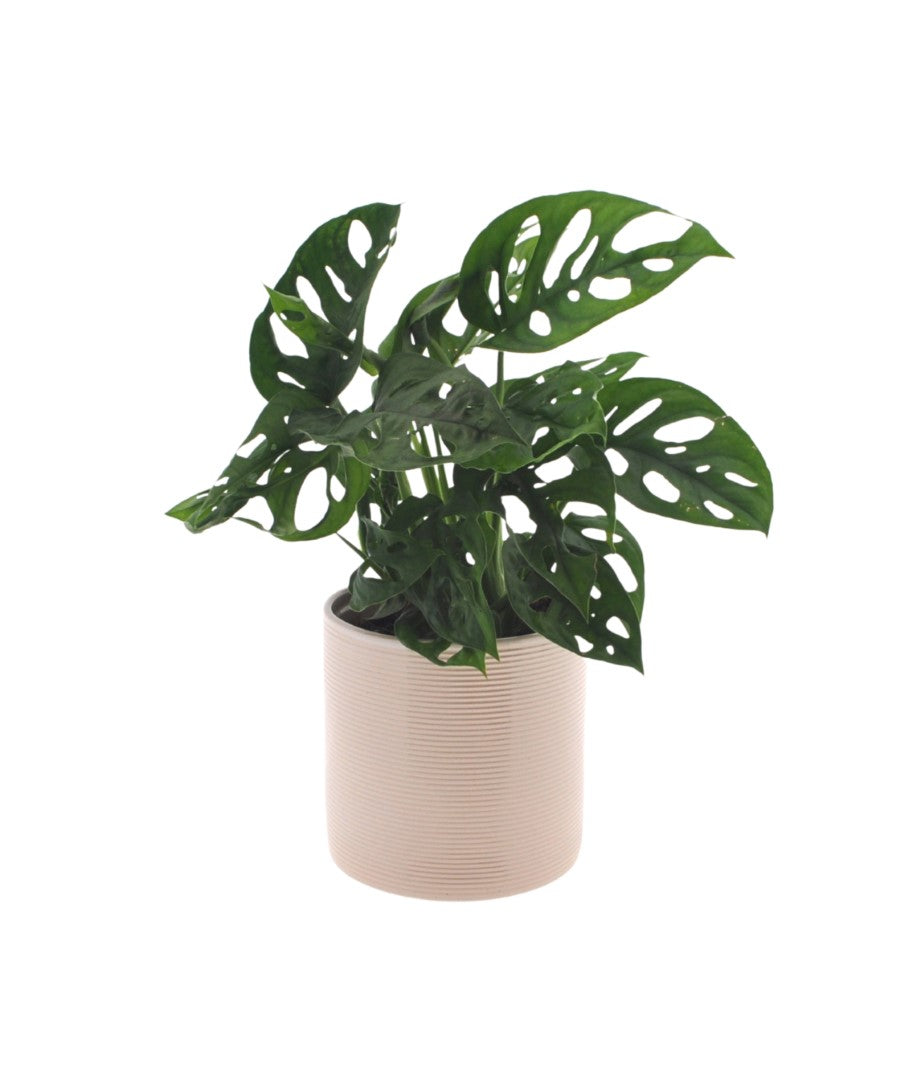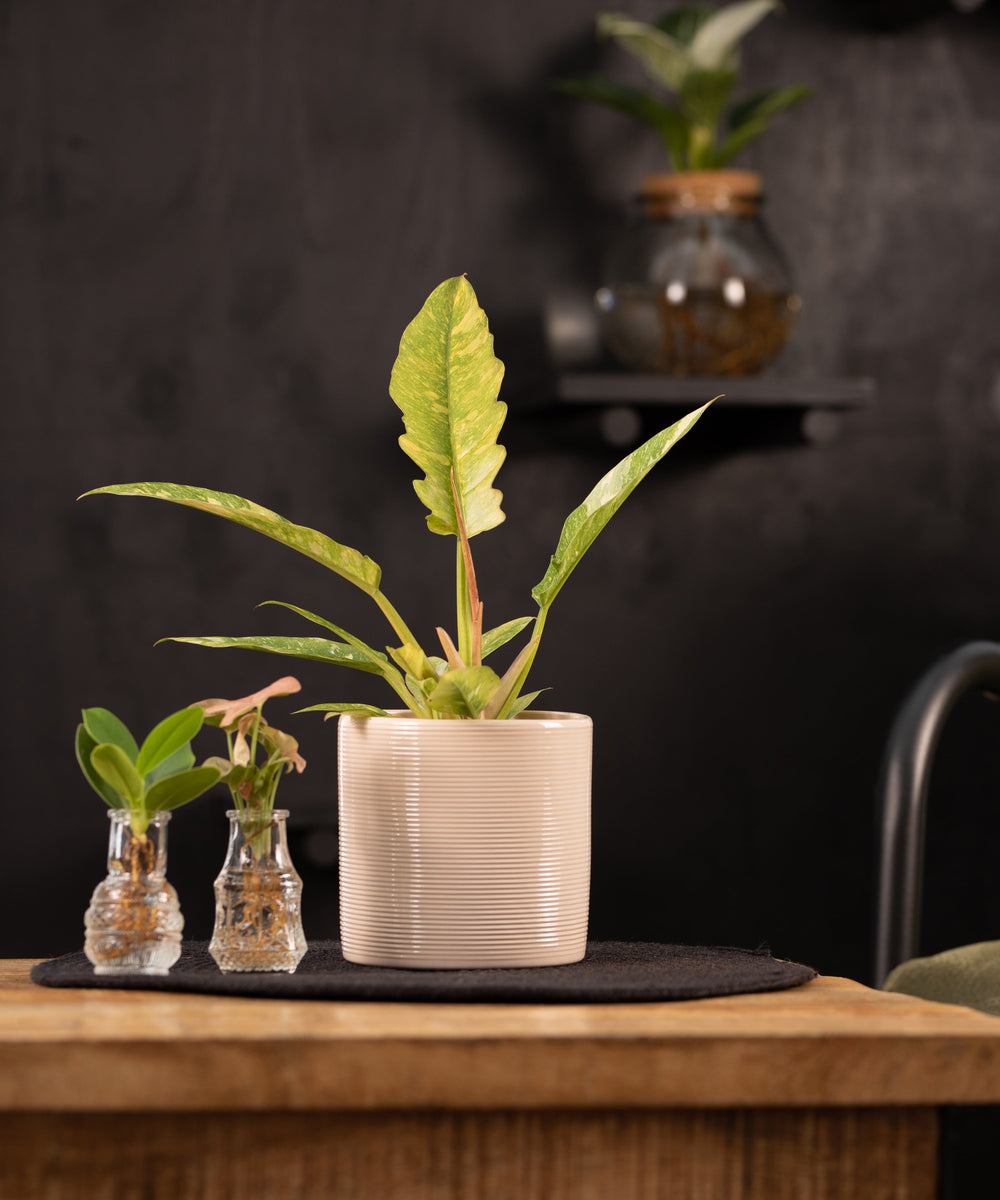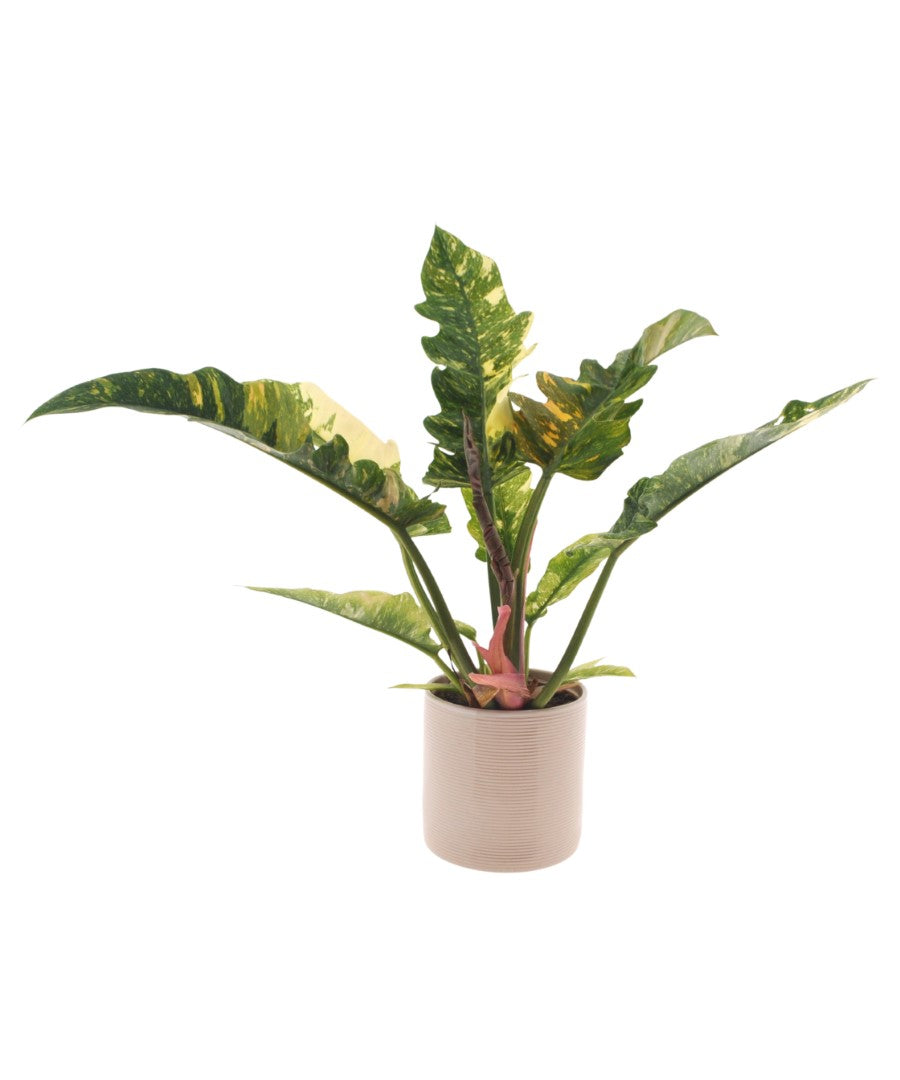Ontdek onze Philodendrons
Alles wat je wilt weten over de verzorging van je Philodendron
De Philodendron groeit in de regenwouden van Zuid Amerika. In de tropen zijn Philodendrons ontzettende klimmers. De bladeren van de Philodendron zijn donkergroen of bruin en glanzend van kleur.
Sommige variëteiten hebben ovale vorm en subtiele lijnen, weer anderen hebben aparte bladvorm en weer anderen hebben een opvallende bladstengel zoals de kleur van de stengel of de structuur.
Waar veel Philodendrons opvallen door hun grote bladeren, zijn er ook andere soorten die juist opvallen door kleinere bladeren, zoals de White Wave. Deze kamerplant is ook nog eens ijzersterk en erg makkelijk te verzorgen!
Check onze Kamerplanten Collectie met een grote variatie aan Philodendrons.
Omdat de roots van deze bijzondere kamerplant in het regenwoud liggen, houdt hij van een hoge luchtvochtigheid. Zijn bladeren kunnen tijdens droge dagen besproeit worden.
Dit verwijdert ook nog eens de stof van de bladeren, waardoor hij beter kan ademen. Ook voorkomt het ziektes, want door te droog te staan, wordt een Philodendron bevattelijker voor plagen. Zet deze opvallende plant dus niet naast de verwarming of in de tocht.
De Philodendron is de perfecte plant voor slaapkamers, badkamers, woonkamers en ruimtes die minder licht ontvangen. Hij houdt namelijk van halfschaduw of op een lichte plaats (uit direct zonlicht). Hij vind het prima als het wat droger is in de kamer, maar kan ook goed tegen een vochtige omgeving. Deze plant is gemakkelijk te onderhouden, maar wel een langzame groeier.
Maak je geen zorgen als het lang duurt voordat je nieuwe bladeren ziet, dat hoort zo. Je kunt de groei van de philodendron wel stimuleren door hem op de juiste manier te verzorgen. De temperatuur waar hij zich lekker voelt ligt tussen de 16 tot 25°C. Hij houdt van stabiliteit, het is belangrijk dat hij niet verplaatst wordt van een lichte naar een donkere standplaats.
Heeft jou plant gele bladeren? Dan heeft jouw philodendron te veel of te weinig water of licht. De aanleg van nieuwe bladeren is altijd een teken dat hij het naar zijn zin heeft. Dit geldt overigens niet alleen voor Philodendrons, maar voor alle planten.
De hoeveelheid water die je de plant moet geven is afhankelijk van verschillende factoren, zoals de grootte van de plant en welke standplaats hij heeft. Het beste is dat de grond donkerbruin is, dan weet je dat het niet te droog is. Als de grond zwart is, is de aarde te nat, en de philodendron houdt niet van natte voetjes!
Houd de potgrond licht vochtig door de plant een keer per week een kleine hoeveelheid water te geven. Geef de Philodendron één keer per maand voeding in de groeiperiode, in de winter hoef je hem maar af en toe water en voeding te geven.
Tip: steek 4-5 dagen na een waterbeurt je vinger in de aarde en voel hoe nat de aarde nog is. Voelt hij droog aan, dan kan de volgende waterbeurt wat meer water gegeven worden dan de vorige keer. Is de aarde nog steeds vochtig na meer dan een week, dan mag de volgende keer wat minder gegeven worden. Zo kun je zelf bepalen hoeveel water er eens in de week gegeven kan worden.
Philodendron planten groeien niet heel hard, maar als een plant te groot wordt voor de pot kan je hem eenvoudig verpotten. Maar hoe zie je nu dat een plant te groot is voor de pot? Als er dikke wortels boven de grond uitkomen of als de plant niet in verhouding is met de pot waarin hij staat. Het kan ook zijn dat de plant omvalt, dan is de pot waar hij in staat echt te klein.
Een plant verpotten is belangrijk, je geeft de plant nieuwe voedingsstoffen en meer ruimte voor wortelgroei. De nieuwe luchtige potgrond is ook belangrijk voor een goede watergift.
Een plant hoeft niet elk jaar verpot te worden. Als je gaat verpotten is de beste periode om dat te doen in het voorjaar, de plant kan na het verpotten sneller herstellen van het verpotten doordat de groeiperiode ingezet wordt in het voorjaar. De Philodendron plant heeft dan de meeste energie om eventuele beschadigde wortels te herstellen.
Bij tuincentrums verkopen ze potgrond om je plant te verpoten. Niet overal is grond te koop voor Philodendron soorten, je kunt het beste palmen grond gebruiken voor het overpotten van Philodendrons. Deze potgrond draagt bij aan het behoud van de mooie groene kleur. Zorg dat de nieuwe pot waar de plant in gaat ongeveer 20% groter is dan de pot waar de plant in staat.
Als je een plant hebt die al wat jaren in je woonkamer staat kan je ook de losse grond om de wortels eraf halen en dat vervangen voor verse grond. Het verpotten naar een pot waar meer ruimte is voor de wortels om verder te groeien is beter voor de plant, maar als het niet anders kan is dit ook nog een optie. Want niet alleen de wortels, maar de plant krijgt hierdoor meer ruimte om te groeien.
Het kan geen kwaad om lange uitlopers van Philodendron planten af te knippen, op deze manier houd je de plant mooi in vorm en kan je weer nieuwe plantjes kweken.
Philodendron soorten hebben verschillende groeiwijzen, hierdoor is het per soort verschillend hoe je het beste de plant kan stekken. Knip het blad altijd af bij het uitlooppunt.
Zorg er wel voor dat je niet te veel bladeren afknipt, de plant heeft bladeren nodig om goed te kunnen ademen. Ook kan je gemakkelijk lelijke bladeren en oude stengels wegsnijden.
Bij klimmende soorten, zoals de Monstera en Scandens, kan je een stengel met luchtwortel afknippen van de plant. Een luchtwortel is een wortel die aan de plant groeit zonder dat er grond aan te pas komt. Als je een stek met zo’n wortel in de aarde zet, zal hij doorgroeien en de stek verder ontwikkelen in een plant.
Ook kan je dit stekje, met de luchtwortel, in het water zetten. Zorg dat er minimaal twee bladeren aan het stekje zitten, en dat de bladeren en de stam niet in het water staan.
De Philodendron soorten die niet klimmen zijn te vermeerderen door middel van zaden of als de plant kleine plantjes aanmaakt naast de stam. Deze plantjes kan je vervolgens verwijderen en in het water of in de vochtige grond plaatsen. Zorg ervoor dat deze aarde niet te nat is, want dan gaat de stek rotten.
Stekjes doen het vooral goed bij een temperatuur boven de 20 graden. Om het stekje meer overlevingskans te geven, kun je een plastic zak over de plant doen. Op deze manier wordt de luchtvochtigheid en de temperatuur verhoogd. Check wel regelmatig of het niet te vochtig is onder het plastic.
Als je het juist mooi vind als je klimmende Philodendron lekker groot en wild wordt en je hem helemaal niet wilt stekken zijn ze gemakkelijk te leiden langs een mosstok of gaasrek. Een uitloper kan het beste teruggeleid worden naar de mosstok. Op deze manier kan je een Philodendron ook mooi in vorm houden. De plant zal door middel van luchtwortels zichzelf vastbinden aan de mosstok of aan het gaasrek.
Geef de stek in het begin niet teveel water. De stek heeft nog weinig wortels waardoor er snel wortelrot kan ontstaan.
Aan het uiteinde van de bladpunten kunnen van die kleine druppeltjes water hangen, dit heet guttatie. Dit kan ontstaan nadat je de plant water hebt gegeven, maar kan ook ontstaan zonder dat je je plant recent water gegeven hebt.
De meeste soorten van de Philodendron familie vertonen deze druppels. Het is niet schadelijk voor de plant, maar misschien wel voor je vloer of meubels, want deze druppels kunnen vlekken achterlaten.
Hoe dat komt: de plant neemt water op met zijn wortels en verdampt het weer via zijn bladeren. In de nacht zijn de poriën van de bladeren dicht en verdampt de plant geen water. Maar de wortels nemen nog wel water op, waardoor er een overdruk van vocht ontstaat. Om dat overtollige vocht kwijt te kunnen raken, heeft de plant speciale waterklieren in de punt van de bladeren, waar de waterdruppels ontstaan.
Bij sommige Philodendrons kun je de druppels voorkomen door deze minder water te geven. Maar bij sommige planten moet je helaas accepteren dat ze dit doen.
De Philodendron is afkomstig uit de regenwouden van Zuid-Amerika. De plant is vernoemd naar de Griekse woorden “philos”, wat liefde betekent, en “dendron”, wat boom betekent. Dit is een passende naam voor deze klimplant, omdat hij vaak omhoog groeit langs de stammen van bomen in de jungle.
De Philodendron is al eeuwenlang populair bij plantenliefhebbers. De Azteken gebruikten de plant bijvoorbeeld al als medicijn tegen koorts en pijn. In de 16e eeuw werd de Philodendron voor het eerst naar Europa gebracht, waar hij snel populair werd vanwege zijn mooie bladeren en makkelijke verzorging.
De plant groeit in vochtige, warme omgeving en heeft veel licht nodig. Het is dan ook belangrijk om Philodendron planten regelmatig water te geven en op een plek te zetten waar hij voldoende zonlicht krijgt. In de juiste omgeving kan de plant erg groot worden en een mooie toevoeging aan elke ruimte zijn.
Naast zijn mooie uiterlijk heeft de Philodendron nog een aantal andere voordelen. De plant staat namelijk bekend om zijn luchtzuiverende eigenschappen en kan helpen om de luchtkwaliteit in huis te verbeteren. Ook wordt de plant vaak gebruikt in Feng Shui, waar hij symbool staat voor voorspoed en welvaart.
Kortom, de Philodendron is een prachtige plant met een interessante geschiedenis. Of je hem nu gebruikt om je huis op te fleuren, de lucht te zuiveren of als symbool voor voorspoed, de Philodendron is een toevoeging aan elke omgeving.
De Philodendron is een groot geslacht van bloeiende planten in de Araceae familie. Binnen de familie van de Philodendron zijn veel verschillen in bladvorm, bladkleur en groeiwijze. Er zijn planten die lange ranken maken, dat worden klimmers genoemd en er zijn kleinblijvende soorten, dat laagblijvers genoemd wordt.
De klimmende philodendrons vormen luchtwortels aan de stengel, waarmee ze langs bomen omhoog klimmen. Onder de hoge bomen in het tropische regenwoud krijgt de plant weinig zonlicht, waardoor de Philodendron naar het licht toe klimt.
De luchtwortels krullen om de bomen heen, wat je haast als een liefdevolle omhelzing zou kunnen omschrijven. En dat is precies waar de naam 'Philodendron’ vandaan komt! In het Grieks betekent philo namelijk ‘houden van,’ en dendron betekent ‘boom’.
Onder de klimmende Philodendrons vallen onder andere de Monstera, Scandens, Red Emerald en Hastatum.
De niet-klimmende Philodendrons worden ook wel laagblijvers genoemd. Een deel van deze laagblijvers kan enorm groot worden, wat ze minder geschikt maakt als kamerplant. De Philodendron Xanadu en Atom blijven een stuk compacter, en zul je daarom eerder tegenkomen in huiskamers. Maar ook kleine Monstera’s zijn prima in een woonkamer te plaatsen.
Weetje: de benaming luchtplantjes heb je vast weleens gehoord. Dat zijn planten die op een andere plant of boom groeien, zonder hier voeding aan te onttrekken. Ze kunnen alle voeding uit de omgeving halen.
Neem dan een kijkje op onze verzorgingspagina. Daar vind je verzorgingstips voor de planten die wij in onze kassen telen.










